
What Are Competency Gaps: Unraveling The Skills Gap For a Thriving Workforce

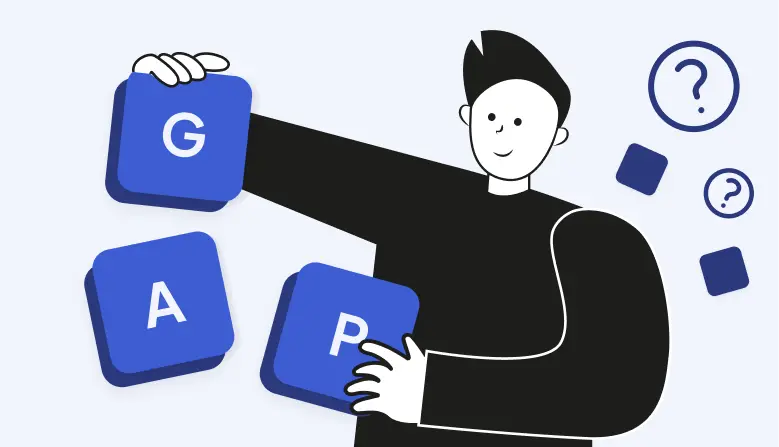
- What Is a Competency Gap?
- Major Types of Skill Gaps
- What Grows The Need For Skill Gaps Analysis?
- What Are Examples of Skill Gaps?
- What Is Skill Gap Assessment: A Step-by-Step Guide
- Tips For Closing The Gaps!
- To Sum Up
Organizations today have faced an unprecedented challenge: the skills gap. But what are competency gaps?
Skills gaps basically outline what your organization requires and whether the existing skills within your company are adequate to meet the needs.
As technology advances, market dynamics and customer expectations shift; therefore, a company’s requirements become more complex and numerous.
Skill gaps and competency gaps may have some technical differences in some aspects.
However, in this article, we use these terms interchangeably and cover the overall fundamentals further.
A skills gap analysis might initially sound overwhelming, but it is a straightforward solution for your organization’s needs: ensure your workforce is up for the challenge!
As a manager, you must be ready to organize well-equipped teams for various projects you have at hand and ensure that you have chosen the right employees.
Note that building professional teams is no piece of cake!
We suggest you use a skill matrix software to fully grasp your team’s abilities and skill gaps to make the right decision.
If you’re still wondering, “What is a competency gap, and why does it matter?” bear with us to find out the heart of this issue, explore real-life skill gap examples, and different organizations’ solutions, and discover what a skill gap assessment is all about.
A Skills Gap Tool grants you the opportunity to reskill, upskill, and enhance your employee engagement for organizational improvement.
What Is a Competency Gap?
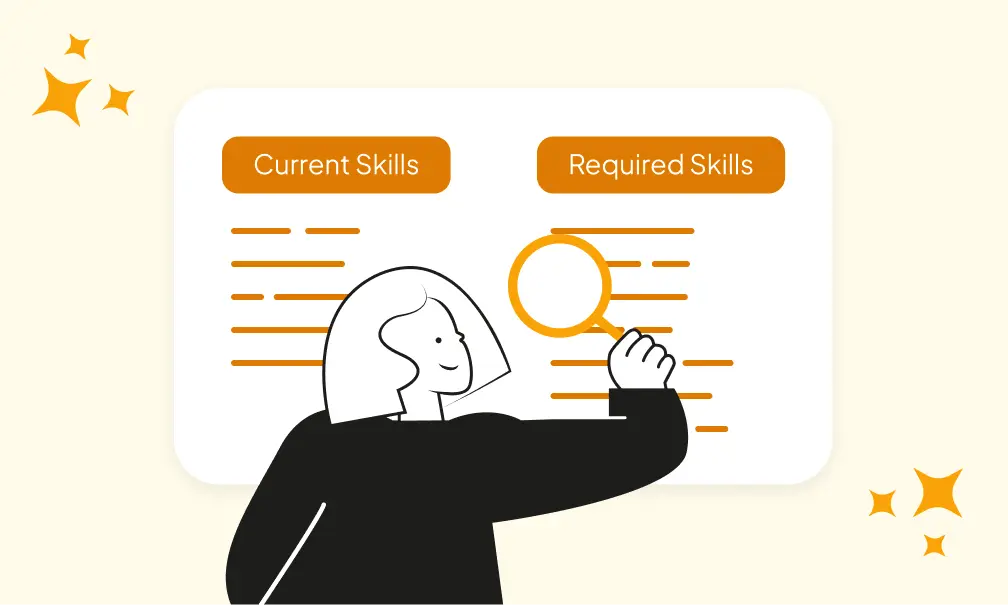
A competency gap (or a skills gap) demonstrates the proficiency difference between an employee’s current skills and the required ones to do their job effectively.
Think of the skills gap tool as a map that coordinates what your employees currently know and what they should know to achieve the best possible outcome.
You might be asking, “What are examples of skill gaps?”. A competency gap can manifest in various shapes, so we have broken down the options into two categories for better comprehension, and we will continue with real-world examples further:
Hard Skills Gap:
Complex or technical skills include an employee's abilities to perform their job efficiently.
Hard skills are usually taught during practice, training, internship, or other educational programs. However, inadequate education, outdated training, and overwhelming industry changes can contribute to hard skills gaps.
For example, the technical skillsets of an IT specialist encompass data analysis, programming, and coding.
Soft Skills Gap:
Soft skills generally involve interpersonal aptitudes, such as critical thinking, problem-solving, teamwork attitude, communicative abilities, etc.
These skills might not seem concerning to the topic at hand; however, they are extremely valuable when it comes to enhancing collaboration, adaptability, and overall efficacy.
Suppose you are interviewing candidates to be the head of the customer service division. In that case, it is evident you will prioritize leadership abilities and proper decision-making over the technical skills concerning your industry.
Major Types of Skill Gaps
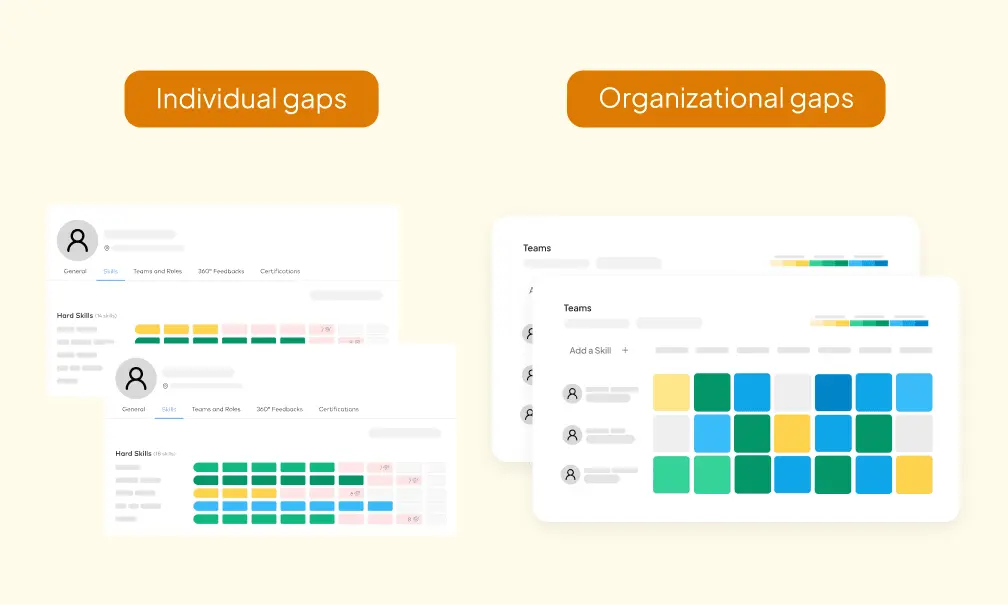
A skill gap assessment outlines the potential talents and productivity that lie within your company.
First, we have to understand how a skill gap impacts your organization:
1. Individual gaps:
Individual skill gaps demonstrate the difference between an employee’s current proficiency level and the required one.
Individual skill gaps result in low work quality and reduced work enthusiasm.
2. Organizational gaps:
You can determine whether or not your employees suit a specific project or a department. A skill gaps assessment reveals how each employee can contribute to your company with their current skills.
Note that organizational gaps don’t necessarily indicate an existing gap in your workforce’s skill sets.
⭐ But what is the solution to these problems? A skill gap assessment!
A skill gap analysis tool allows you to identify your weaknesses, locate your improvement area, and plan for further strategies to boost your organization’s status.
What Grows The Need For Skill Gaps Analysis?
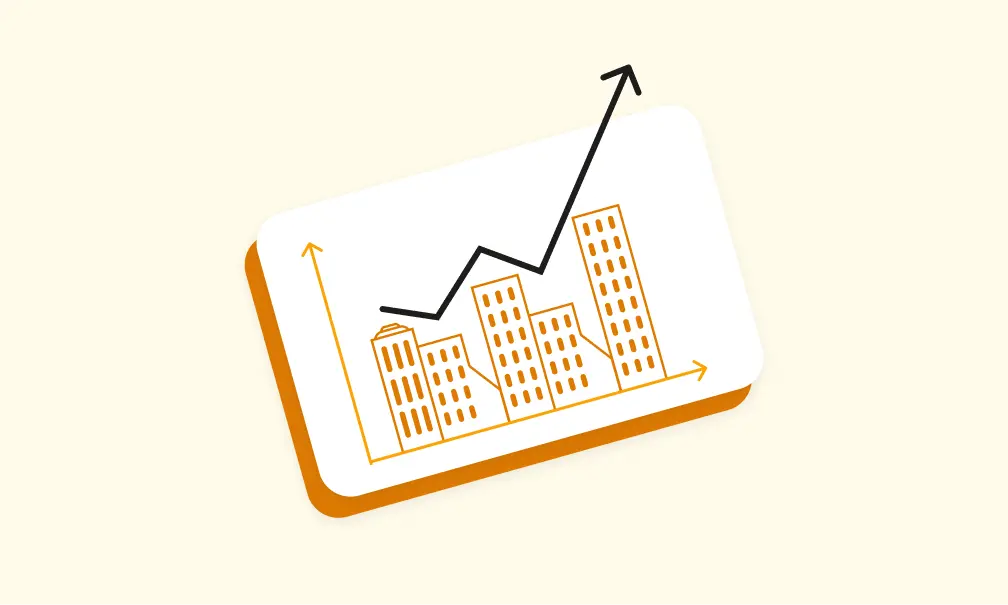
The need for competency management has increased over the past few years. But why?
Competency gaps are a common issue within any organization, and there are some specific factors contributing to this growing need for competency:
1. Retirement Wave:
An unanticipated retirement wave is always a crucial factor in creating competency gaps.
With older employees choosing the retirement path, Not only will the organization be deprived of their high work quality, but it will also miss the knowledge and mentorship they could offer the younger employees.
2. Regulations:
Even though it is perfectly logical that some companies need high qualifications for their job roles due to various risks and work environment factors, their increasing regulations in job requirements, resource allocations, etc., are tough to pursue.
3. Contract Workers and Freelancers:
It is common to see managers complain about the freelancers they hire from different platforms. However, hiring freelancers is definitely not a factor in bringing your company down!
Using a simple competency gap analysis, or a skills matrix for freelancers, as well as your employees, allows you to have a better experience in hiring contract workers.
4. New Expectations:
With the shift in workforce demographics, a more significant portion comprises Millennials and Generation Z.
This factor is causing an increase in employee engagement and transparency around career paths as increasingly more employees expect an empowering workplace.
We can achieve such goals by addressing the skill gaps and aligning the roles with competencies.
What Are Examples of Skill Gaps?
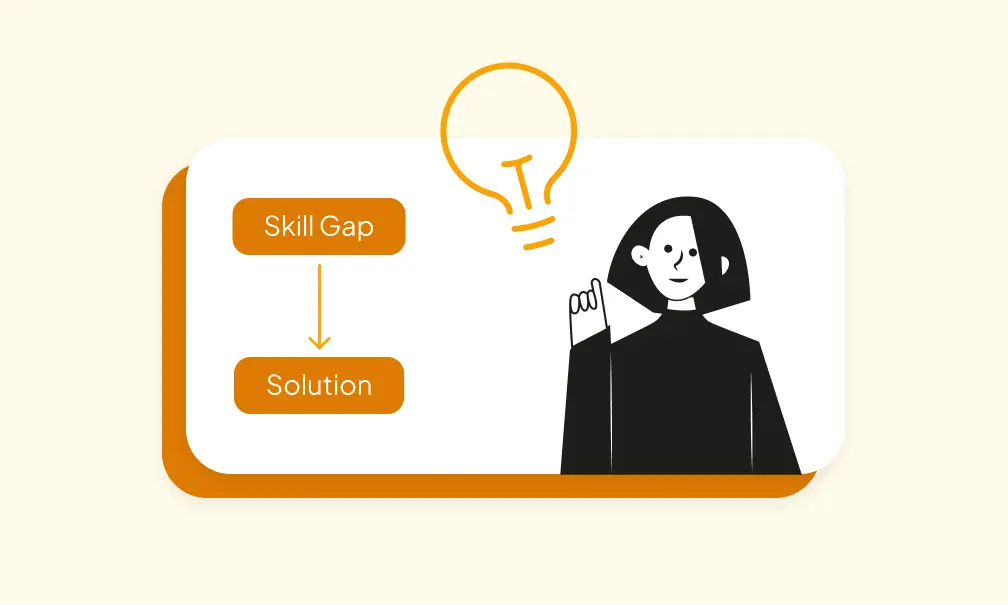
Skill gaps have become a common challenge for many organizations as they constantly attempt to keep up with the trending demands.
We will further examine how organizations can face various skill gaps, provide suggested solutions, and give hypothetical yet possible skill gaps you might face in your organization.
Real-Life Examples of Skill Gaps:
As mentioned earlier, many organizations face skill gaps. Don’t get us wrong on that! Facing a skill gap is not a huge issue.
Skill gaps are an excellent chance for companies to empower their workforce and hire new talents.
Now, it’s time for some case studies!
1. McKinsey & Company:
As an American multinational management consulting firm, McKinsey & Company offers professional services to various corporations.
❓Gap: McKinsey’s research demonstrated that many organizations are experiencing skill gaps due to our fast-paced technological and business world.
✅ Solution: Mckinsey recommended that companies focus on reskilling programs, such as training in data analysis, IT management, and executive management, to prepare themselves for the following projects.
2. General Assembly:
As a pioneer in education and development, General Assembly specializes in coding, business, data, design, and other skills that are demanded.
❓Gap: General Assembly recently reported the presence of a significant skill gap in the digital and tech sectors.
This gap was found to be more common in some geographies than others.
✅ Solution: General Assembly took the initiative to establish a campus in Bahrain to offer digital apprenticeships and bridge the skills gap.
3. Organimi and Disprz:
Organimi and Disprz are educational and technological companies providing various training platforms to boost employee skills.
❓Gap: Organimi and Disprz both claim that industries face rising skill gaps due to our fast and evolving business and technology world.
These skill gaps vary from IT knowledge all the way to communicative manners.
✅ Solution: The mentioned companies suggest different strategies, such as learning opportunities, education programs, conducting various skills gap analysis, etc.
Hypothetical Gaps You Might Face!
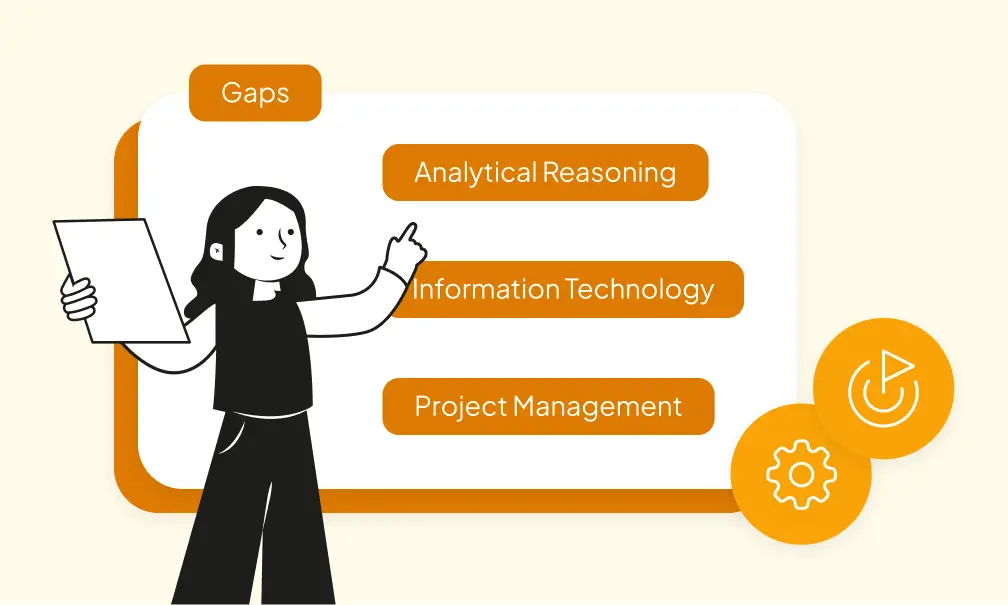
Some of the following skills may be common in many industries, and some are more specific. By examining these exemplary issues, you will better understand what you should look for and how you should address such matters.
-
Analytical Reasoning:
Data analysis is a crucial factor in many careers. Employees who aren’t capable enough to analyze and reason a set of data can’t make informed decisions concerning a business.
Moreover, insufficiently analyzed data usually escalates to significant organizational issues.
✅ Solution: improving one’s analytical reasoning is not too much of a difficult challenge. Organizations can provide individuals with resources to improve this skill by using visual data, studying the correlation between variables, and performing test analyses using various programs.
-
Information Technology (IT):
Considering the rapid changes in the technology world, employees' skills are expected to sometimes mismatch with the required knowledge.
✅ Solution: Organizations are obligated to develop training programs for continuous learning and upskilling if they expect high work quality. Certified courses and short-term education might be appealing in some cases.
-
Project Management:
As a complex skill in numerous organizations, project management determines the ultimate outcomes.
Inadequate strategies, poor executions, and neglectful monitoring in project management result in bad reviews, delays, budget overruns, and other mishaps.
✅ Solution: Firstly, you must be cautious when hiring a project manager. We suggest you apply thorough tests, such as a 360-degree feedback tool, and analyze candidates in a skills matrix.
Secondly, you can provide further specialized programs for your employees to enhance their ability to manage projects effectively.
An Employee Performance Reviews Software allows an extensive outlook on each individual and enhances the decision-making process.
What Is Skill Gap Assessment: A Step-by-Step Guide
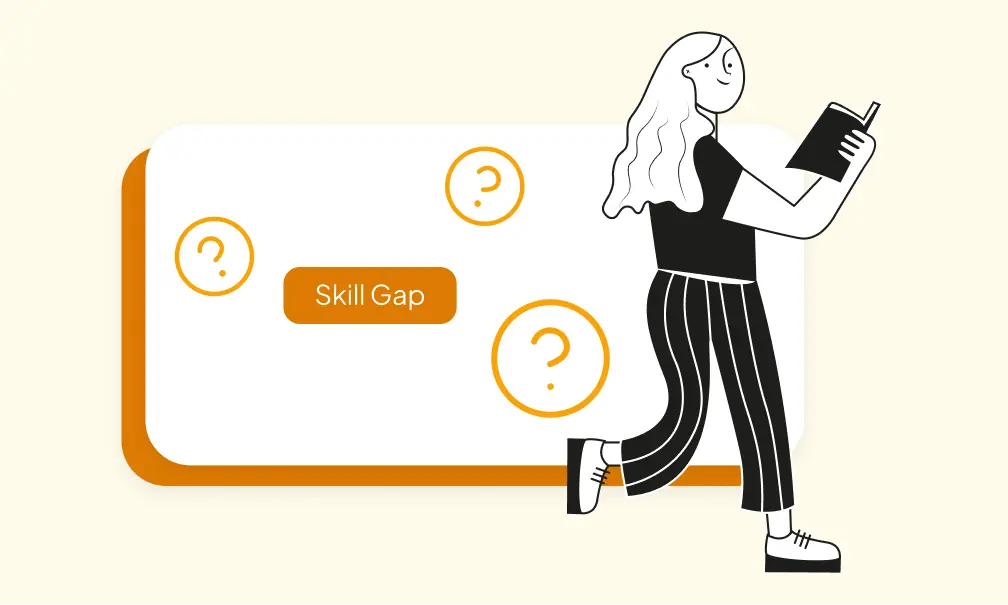
A Skills gap assessment or skills gap analysis consists of a series of tests, surveys, or a skills matrix table that identifies the areas your organization is struggling in.
In other words, a skills gap analysis precisely determines the difference between the current status of your workforce and the required one.
We will briefly explain how to conduct a simple skills gap analysis in 3 steps.
Note that self-conducted assessments are not detailed enough to be exploited by larger companies and in challenging situations.
1. Assess The Current Competencies.
As you might be familiar with our “What Is a Skills Matrix?” article, the first step in team assessment is always building a reliable data inventory.
Once you have gathered every existing skill in your organization, you must assess them with a grading system to evaluate each employee in various fields.
After you assess your employees, we suggest you create a skills matrix for the next step.
You must compare your workforce’s competencies with the required standard.
This step is much simpler and more efficient when using a skill matrix software.
Note that each organization and each project is different from the other, and your standard for a specific position is not applicable in every company and every job.
Our skill matrix software helps you collect, organize, and analyze your team’s skills to identify gaps and improvement areas.
2. Plan For The Future.
Once you have enough data to comprehend what skills and competencies your company needs at the moment, you must start strategizing for future demands.
Whether taking on more complex projects, staying on the same track, or expanding your organization, you must anticipate the demanded skills.
⭐ Pro Tip: If you don’t know how to predict the future, don’t worry! Reportedly, industries follow patterned trends, which make them somewhat predictable. You will undoubtedly make up a strategic plan if you look closely into your industry, technological advancements, and future goals.
3. Align Individual Gaps With Organizational Ones.
You must remember to analyze individuals’ skill gaps, their teams’ gaps, and the identified gaps in your organization.
But why is this step necessary? Having a holistic view of your employees as well as your company allows for more precise planning for training programs.
Nevertheless, by analyzing the identified gaps, you come to prioritize the skill gaps that effectively impact your organization and overlook the ones that are harmless for now.
⭐ Why you should choose agyleOS over the conventional skill gap assessment!
Even though conducting a skill gap analysis is pretty straightforward according to our article “How to conduct a skill gap analysis”, we suggest you take things up a notch to achieve the best possible results.
Our skill gap analysis tool has numerous benefits to offer your organization. Nevertheless, we have listed a couple of items below to get you started:
1. AI-Powered Skill Gap Analysis:
At agyleOS, we use an AI-powered method to analyze skill gaps in roles.
Role skill gaps indicate the areas each candidate needs help with, resulting in more informed decision-making.
Our software eases the process of evaluating employees‘ skill gaps due to their particular roles.
2. Professional Skills Gap Analysis:
Our skill matrix software helps you analyze your skill gaps more profoundly and address them efficiently.
With thorough 360-degree feedback sessions, we help you evaluate each employee’s competencies and assign the most fitting projects.
Tips For Closing The Gaps!
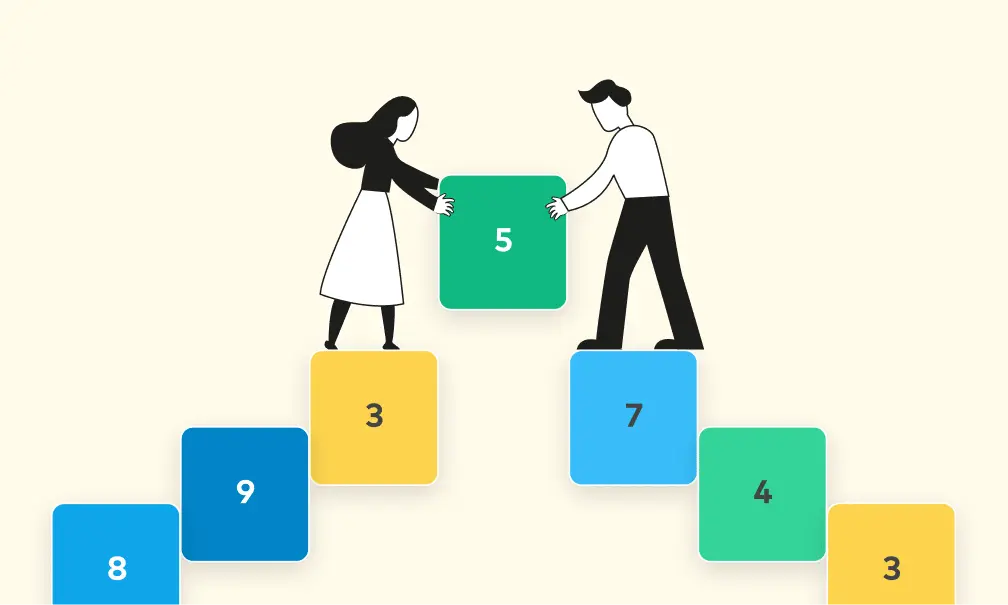
Once identified, take action! 💪
The most essential part of conducting a skills gap analysis is “What will you do about it?”
Well, let’s discuss a few tips if you want to take proactive steps to improve your organization.
1. Upskill and Reskill!
These methods are as cool and powerful as they sound!
Upskilling and reskilling enlist various approaches to retain and attract talents.
Skills management visualizes development routes and critical competencies besides setting specific development goals for career growth.
Using a skills management software helps you reskill, upskill, and grow career opportunities.
Upskilling is a series of training programs designed to upgrade the existing skills in your organization.
With the help of upskilling, you can increase your retention rate as well as enhance work quality and productivity.
Reskilling, on the other hand, is about hiring new talents and expanding their competencies to fill the gaps you can not fill with your current skills.
Even though reskilling might sound more chaotic and less cost-effective than upskilling, it is still a great approach to resolving skill gaps if appropriately executed.
A skill management software allows you to identify skill gaps and choose the right approach to addressing them.
2. Learning and Development (L&D):
Creating a work environment that promotes continuous learning will not only result in more educated and trained employees but will also enhance your company culture greatly.
Leverage various education platforms, workshops, mentoring, certified courses, etc., to empower your team and improve their skills and competencies.
To Sum Up
Skill gaps have become a noticeable issue over the past few years. Considering how the difference in proficiency levels can affect your organization in many aspects, it is essential to take proactive steps to bridge the gaps for higher success.
n this article, we explored what is a competency gap, what is skill gap assessment, and what are examples of skill gaps.
Skill gaps come in individual and organizational aspects, indicating their significant impact on employee experience and management performance.
As discussed in the article, skills gap analysis is a significant approach to identifying, locating, and planning for the existing competency gaps in your organization.
Moreover, a skills gap management platform allows you to distinguish between these gaps and have strategic plans to future-proof your organization.
Finally, the most crucial step after analyzing the competency gaps is taking the initiative to overcome them!
You can apply various methods, including upskilling, reskilling, etc. Or you can discover a genuine process that best serves your organization’s status!
Stay informed, stay above! 🚀
By submitting this form, I confirm that I have read the privacy policy and that I consent to the processing of my personal data by agyleOS for the purposes stated. In the event of consent, I can revoke my consent at any time. Furthermore, by submitting the form, I agree to the general terms and conditions.
- Product
- Resources
- Compare
- Company
